The first Presepe (or Presepio) in Naples can be seen in 1340, given by Queen Sancia of Aragon, wife of Robert of Anjou, to the Poor Clare nuns. It consisted simply of a cave, animals and holy figures. The San Martino National Museum in Naples preserves the statue of the Madonna.
But the actual inventor of the Neapolitan nativity scene, as we know it, was St Gaetano da Thiene. Encouraged by St Francis, he decided to go beyond the representation of the Nativity alone, which had existed until the 17th century. He gave more significant value to the rest of the scene, filling it with characters and places that mixed the sacred and the profane.
Riding the wave of the city's cultural and artistic renewal, in the years when Charles III of Bourbon reigned, the Neapolitan nativity scene also acquired new values. So much so that the king himself wanted one specifically for his court, at the Royal Palace of Caserta (which can still be visited today).
The clients changed: the religious and the rich and the noble. Neapolitan artisans or "Figurari" began to indulge their imagination, making figurines of various types, characters from everyday life which, as if by magic, have remained intact and omnipresent from the 18th century to our present-day nativity scenes.
Well, that's a brief history of the Neapolitan nativity scene. But how much more is there to know? Visit Italy has collected five curiosities for you.

Another entertainment that is characteristic of the Neapolitans, the crib [...]; a light, the hut-shaped stage is built, all adorned with trees and evergreen trees; and there we put the Madonna, the child Jesus
The Neapolitan Crib of the 18th century
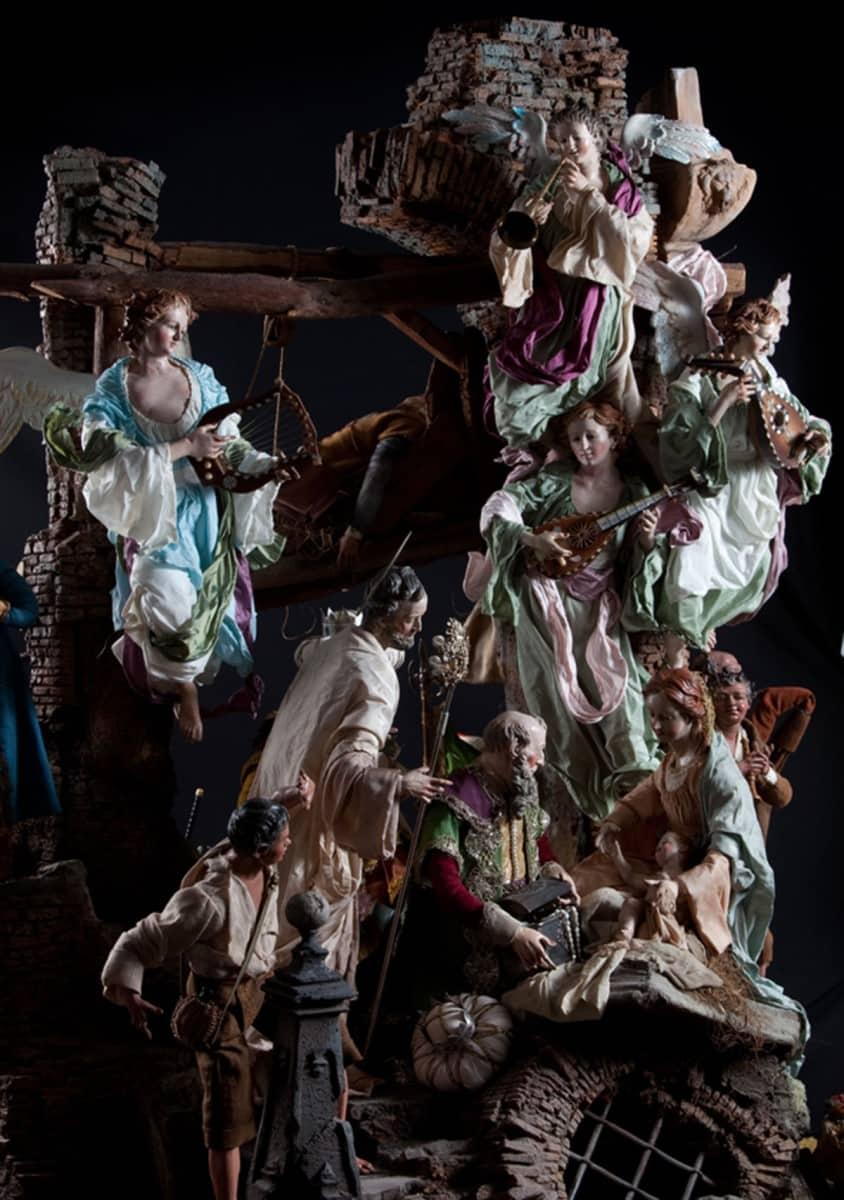
The Neapolitan nativity scene enjoyed its heyday in the 18th century, leaving the churches where it was an object of religious devotion to enter the homes of the aristocracy. Giuseppe Sanmartino (author of the Veiled Christ) was perhaps the greatest Neapolitan sculptor of the eighteenth century: he was highly skilled at moulding terracotta figures. He started a school of nativity scene artists.
Among the Neapolitan cribs of the eighteenth century, the best known is the one donated by the writer Michele Cuciniello, who began collecting shepherds in the mid-nineteenth century. His collection of tiny sculptures houses in the Museo di San Martino. Cuciniello himself took care of setting up the "Scoglio" (the cork scenery), creating a highly suggestive scenographic effect that still strikes his admirers today.
Where are the Three Kings of the Neapolitan nativity scene?
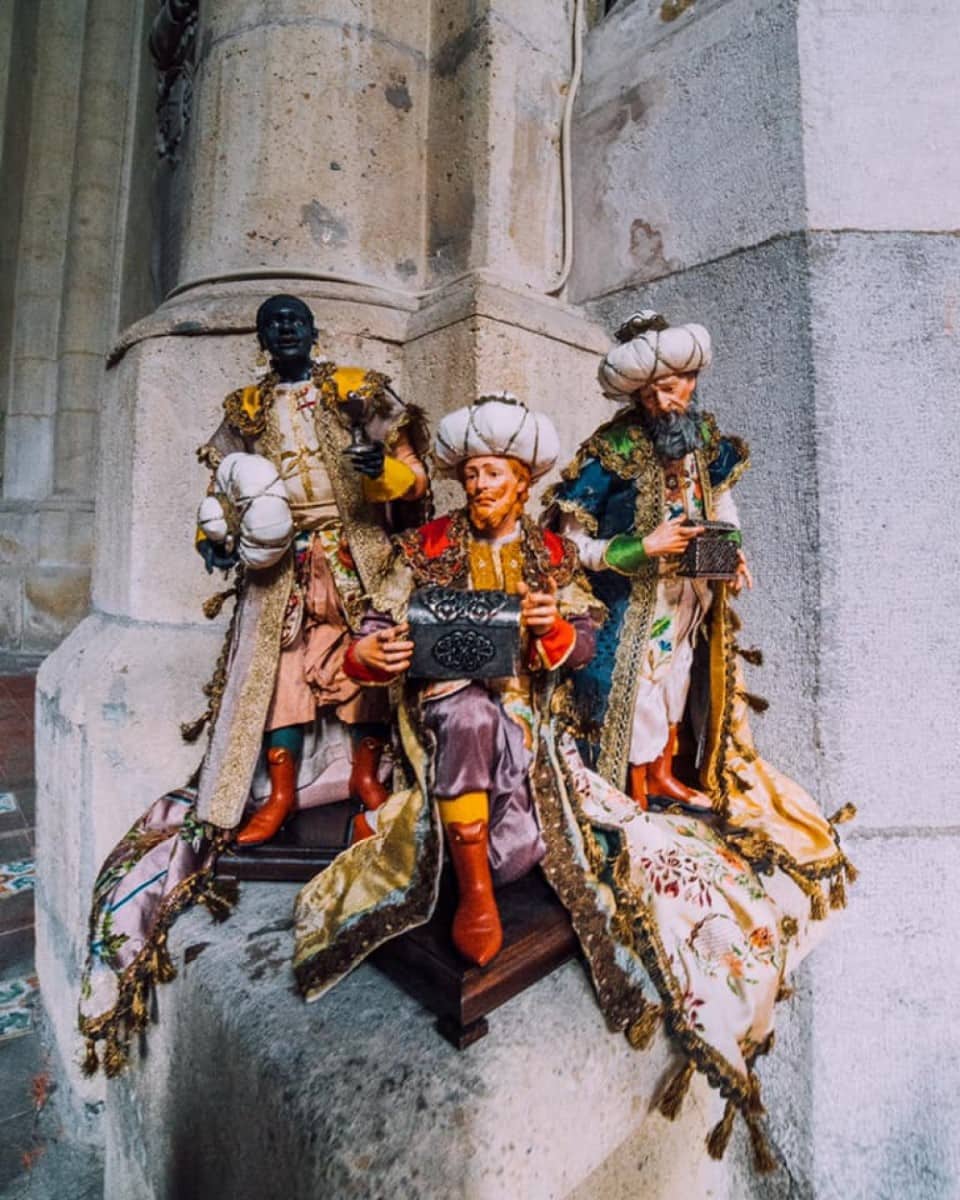
The Three Kings, known by Gaspar, Melchior and Balthasar, are a must in the Neapolitan nativity scene, giving it a touch of the Orient. Due to trade and visits by wealthy men of oriental origin, they added the Three Kings to the Neapolitan nativity scene. Who stopped in the port of Naples to conclude their business and influenced Neapolitan culture with their stories.
But there is one more reason why the movement of the Three Kings on the Neapolitan crib is so essential. When the Christmas season approached in ancient Naples, it was customary to move the Three Kings on the crib from the beginning of the festivities until the day of the Epiphany. It was to symbolise the historical and legendary journey of the Three Kings to meet the Baby Jesus.
The curious case of the fourth
Still, on the subject of the Three Kings on the Neapolitan nativity scene, there is another legend that circulates about them. A fourth King appears on the eighteenth-century nativity scene, to be precise a woman in exotic clothes, ironically baptised by the Neapolitans as the Magic Queen.
With her shiny face and elegant features, the woman, sometimes light-skinned and sometimes dark-skinned, is said to be none other than Diana, the personification of the Moon and the universal feminine principle. She is called 'La Georgiana' and follows the Kings on foot or a sedan chair supported by servants.
Every shepherd in the Neapolitan nativity scene is a symbol
All the characters in the crib acquire a fundamental symbolic value.
- The washerwomen: they hang out the washing (strictly white to indicate virginity) of the Virgin Mary. They are the midwives who rush to help the young Madonna.
- The hunter and the fisherman: together, they represent the life cycle (the hunter is death, and the fisherman is life). Moreover, eternal life and immortality are often associated with the figure of the fish. At the Christian persecution, Christ himself was referred to "in code" by a fish symbol.
- The Shepherd of Wonder: in him, there is all the wonder of discovering the divine, the irrepressible surprise of man coming into contact with something immense. For some, he would be Benino himself awakened from sleep.
- The vintner Cicci Bacco: depicted sitting on a barrel driving a cart. Pagan among Christians, he is the representation of the god Bacchus.
- Zi' Vicienzo and zi' Pascale: the two companions represent Carnival and Death, respectively. In Naples, the latter's skull is in the Fontanelle Cemetery, and the people ask him for advice on which numbers to play at Lotto.
- Stefania or gipsy woman was a young woman whom the angels forbade visiting the baby Jesus because she was neither married nor had children. So Stephanie took a stone, wrapped it in a cloth and pretended it was her little son. Deceiving the angels, she managed to get to Jesus' presence the next day. In Mary's presence, the miracle happened: the stone sneezed and became a child, Saint Stephen, on 26 December.
These are just a few of the most famous characters in the nativity scene. Tradition has it that there are about 72, which in the Smorfia Napoletana is the number of "Wonder" since the intention is to amaze.
Benino: the shepherd who dreamt of the Presepe
The figure of Benino, the sleeping shepherd, is a must in every self-respecting Neapolitan nativity scene. Many people mistakenly think that his name is Benito. Still, it is only a mispronunciation that spread during the Fascist period.
Usually placed far away from the cave with the baby boy, Benino is none other than the sleeping shepherd boy of the crib. The angels announce the birth of the baby Jesus. But another legend says that Benino was only dreaming of the crib itself. In fact, according to the legend, the crib was born thanks to Benino's dream, so no one must wake him up. Otherwise, the crib itself would disappear.
As far as the meaning of his character is concerned, Benino represents humanity, which was asleep before the birth of Jesus and woke up from this vegetative state with Advent. Numerous writers have recounted the figure of Benino and the sleeping shepherds who the angels awoke, including the Latin poet Virgil (Neapolitan by birth), who speaks of him in the Bucolics.
A merchant a month
Still, on the subject of shepherds, there is no Neapolitan nativity scene in the 18th-century tradition without a market. The various activities represent the main commercial activities throughout the year. So, for every merchant, there is a month:
- January: butcher or charcuterie seller
- February: seller of cottage cheese or cheese
- March: poulterer
- April: egg seller
- May: a woman selling cherries
- June: baker
- July: tomato seller
- August: watermelon seller
- September: farmer or sower
- October: vintner
- November: chestnut seller
- December: fishmonger.
Nothing is accidental about the Neapolitan nativity scene
Nothing is there by chance on the Neapolitan nativity scene. Everything follows precise rules. They start with the structure known as the Scoglio (rock), made up of traditional materials such as cork, wood and paper-mâché, which make up the "nativity rock" on which the shepherds are.
The Neapolitan nativity scene does not lack certain elements, such as:
- the river: flowing water is a symbol linked to death and divine birth. In the case of the Christian religion, it recalls the fluid of the maternal foetus but, at the same time, the river is the Acheron that ferries the damned;
- The bridge crosses the river and is a clear symbol of passage. Some Neapolitan fables tell of three children killed and buried in the foundations of a bridge to hold the arches together magically. It, therefore, represents a passage between the world of the living and the world of the dead;
- the well: a link between the surface and the underground waters. Its history is full of anecdotes and superstitions, making it a place of fear. One of them is that once upon a time, people were careful not to draw water from it on Christmas night because they used to believe that the water contained diabolical spirits capable of possessing people who drank it;
- the tavern: this leads primarily to the dangers of travelling. Inside, there is a banquet. Symbol of wickedness in the world, which the birth of Jesus illuminates;
- the bakery: it is a reference to the new Christian doctrine, which sees bread and wine as its foundations (in the Eucharist), as well as representing a typically popular craft;
- the church and the crucifix: the presence of a church, as well as the crucifix, testifies to the anachronism of the Neapolitan nativity scene, set in the 18th century.
San Gregorio Armeno: the Presepe's street
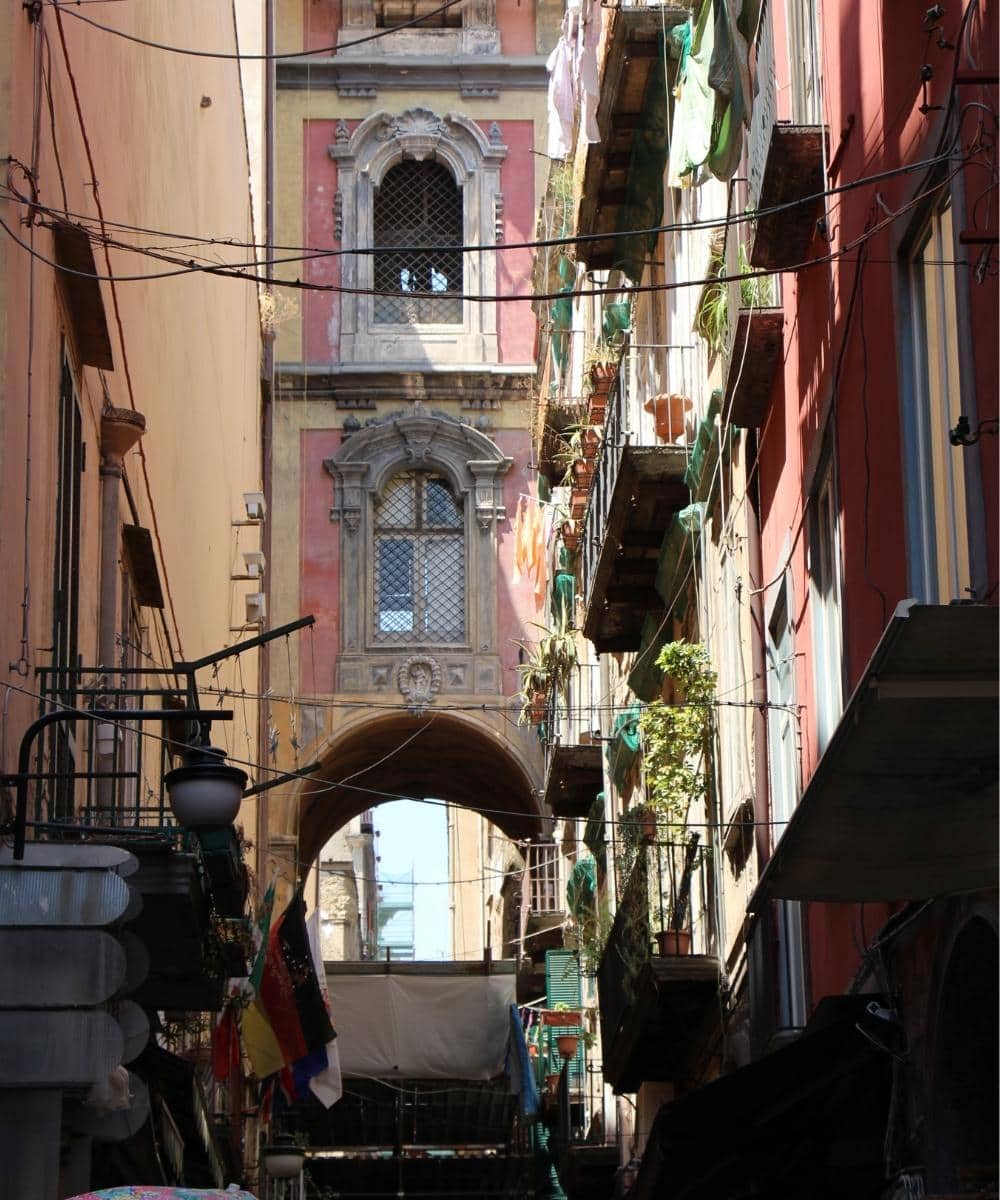
San Gregorio Armeno
Via San Gregorio Armeno is the street in the historic centre of Naples that has become famous for its nativity scene workshops. But how did this street become so famous?
The origins of San Gregorio Armeno go back a long way. There used to be a temple dedicated to Ceres in the street in classical times. The citizens offered terracotta figurines made in the nearby workshops as votive offerings.
Of course, the nativity scene arrived much later. But the destiny of the street was this one!
Today, Via San Gregorio Armeno has known the world as the exhibition centre for artisans' workshops, which produce canonical and original nativity figurines all year round. Usually, eccentric artisans enjoy reproducing and displaying figurines of famous contemporary figures.
The proper exhibitions start around Christmas time, usually from November until 6 January.
- Do you like Presepe? - Not, I don't like it. I want a cup of milk
The Neapolitan Presepe tradition: an art handed down from generation to generation
The Neapolitan Presepe is a cultural legacy that shows no signs of waning. The secret lies in its realism and the craftsman's love and passion for it. It is no longer just a religious symbol but a descriptive, identifying and unifying tool for the community to which it belongs, in its detailed composition. One could almost say that the Neapolitan nativity scene remains a vehicle for identifying the Neapolitan gens.
More and more young artists have approached and carried on this beautiful art. Like Guglielmo Muoio, master of the Neapolitan nativity scene. We at Visit Italy were kindly welcomed into his workshop Ars Neapolitana, an elegant atelier of nativity art and sacred sculpture, located in Via dei Tribunali 303, near the famous San Gregorio Armeno.
Here we admired him at work, where he explained to us the whole process of creating a handmade Neapolitan shepherd, and in particular, we observed him making ahead:
1. A Fistful of clay is used to shape and mould the face;
2. the clay is worked for about 5 hours, repeatedly in detail;
3. to best represent the character, Guglielmo takes inspiration from old books and images from the Neapolitan 18th century;
4. he then removes impurities and finishes the figure;
5. now, he leaves the figurine dry for 12 hours and then 9 hours in the oven at up to 920° C.
Guglielmo tells us a bit about his story and how his passion for the nativity scene came about between one passage and another. He tells us that he dedicated himself to sculpting and creating nativity scene structures as is customary in his family as a young boy.
Guglielmo Muoio's sculptural techniques always express great physicality based on a continuous analysis of contemporary reality compared with 18th-century figures. Guglielmo told us that, after his humanistic studies, he studied Diagnostics and Restoration of Cultural Heritage at the Suor Orsola Benincasa University in Naples. Here, he acquired a more profound and more scientific knowledge of materials and a historical awareness of the art in which he works.
But here, Guglielmo Muoio's story is interrupted. The oven is ready to be opened, and the statues come out. Guglielmo takes one. In particular, he says it is a Herdsman. It needs to have eyes added to it! And so William takes a jar of glass beads on which are painted little eyes. He takes a couple of them and uses them on the figurine.
He proceeds to repaint it, and to do this, Guglielmo uses natural acrylic paints. But he explains that he could also paint it in oil. The figurine's body is in straw, while the legs and arms are wood.
Well, once our figurine is ready, it needs to have clothes. It is the moment of Guglielmo's wife, Laura Loina, an expert in tailoring and embroidery for shepherds and saints in the Neapolitan style of the 18th century, comes in.
The figurine (the shepherd) is ending, and so is our time in the workshop. We say goodbye to Guglielmo and Laura, aware of how much passion and love there is in their work. The desire to learn more and go beyond the experiences of the family workshops. All this has given their work greater confidence, expressed in the rapid and incisive gesture and scholarly work, rich in learned quotations and deep spirituality.
Find out more about Ars NeapolitanaAbout the author
Written on 22/12/2021


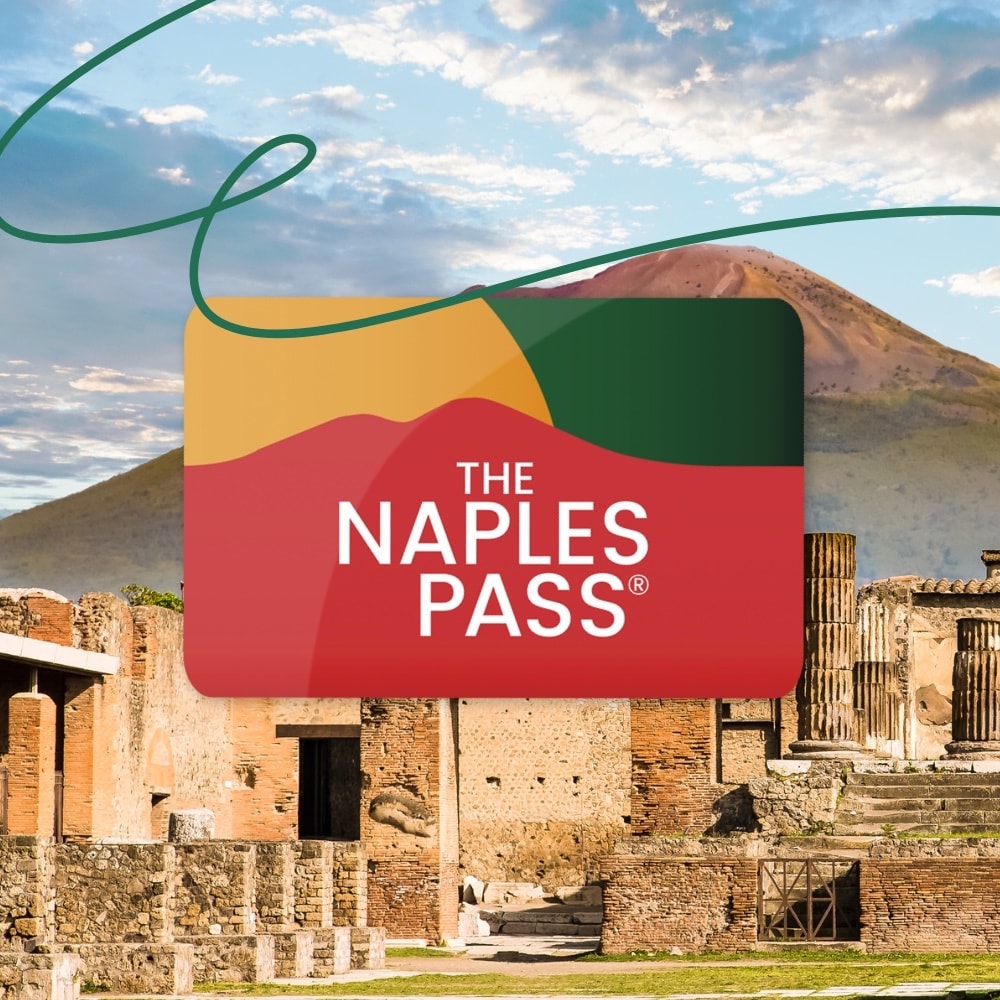
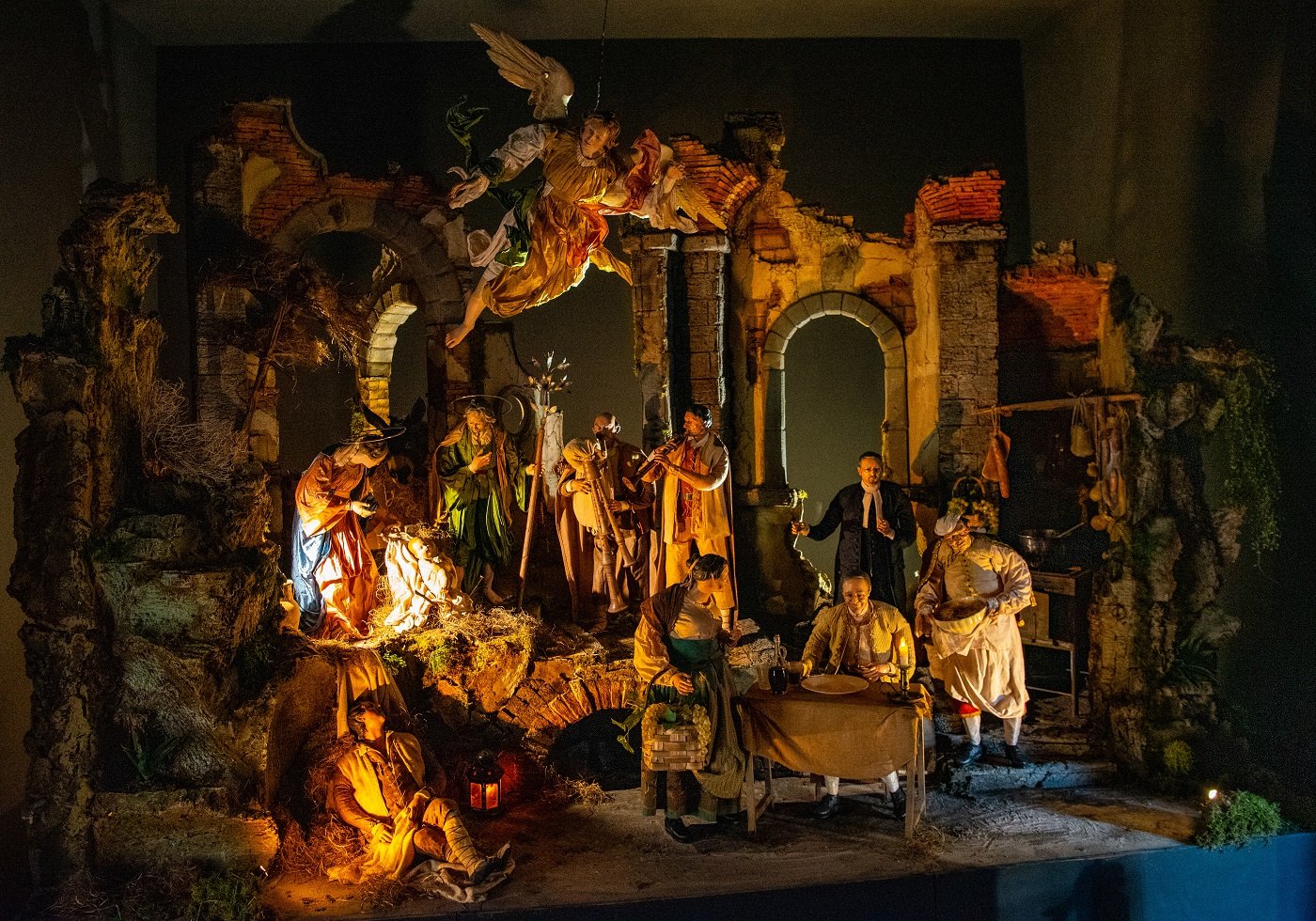
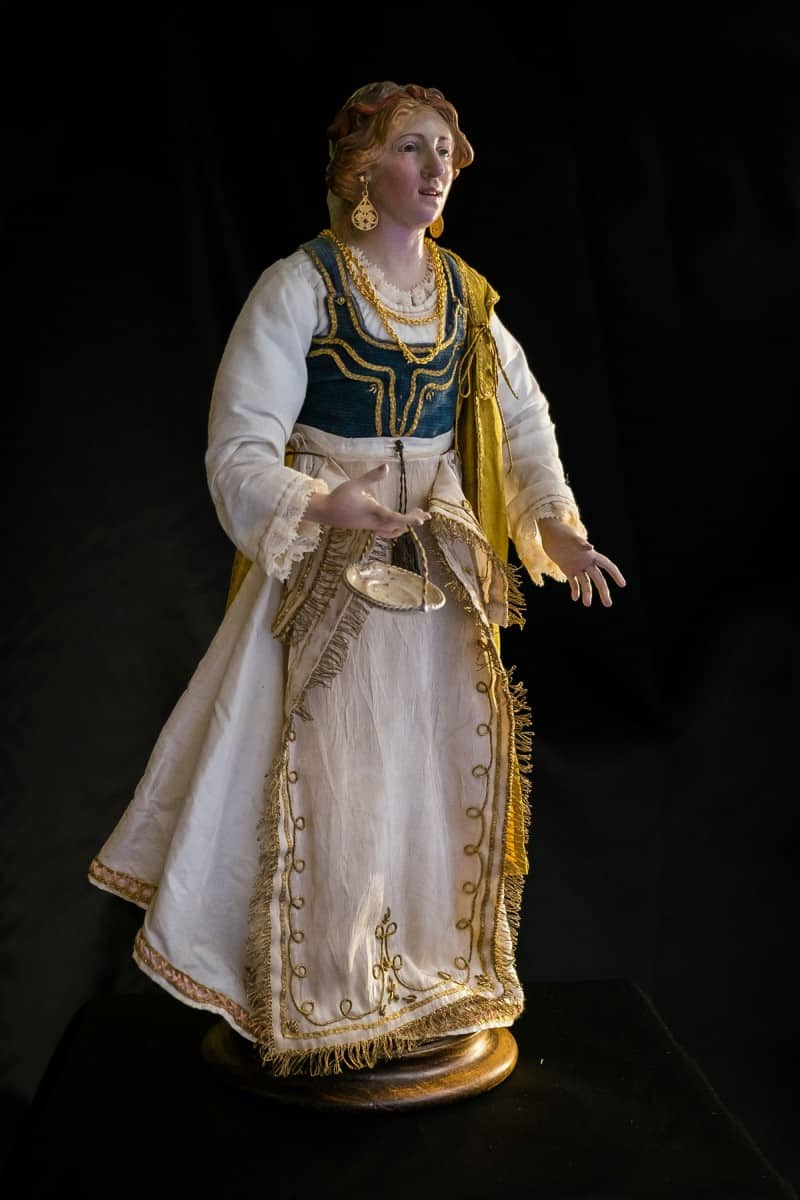
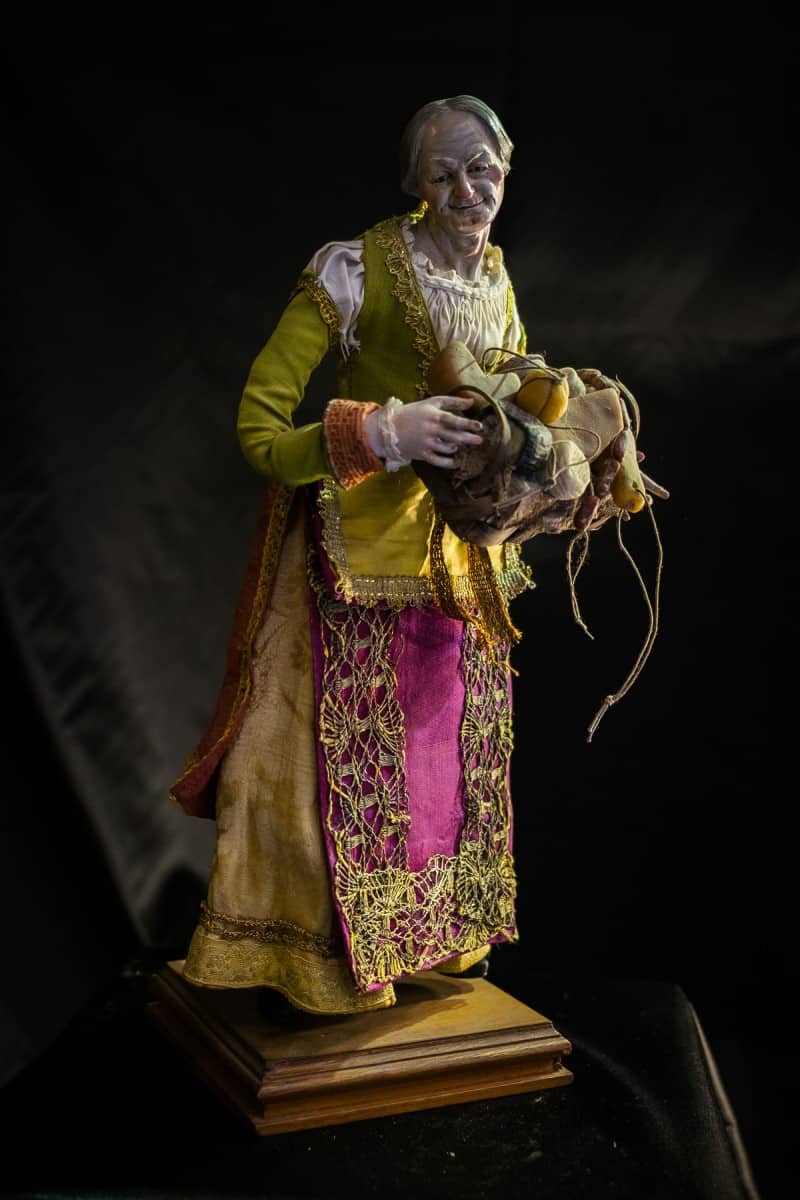
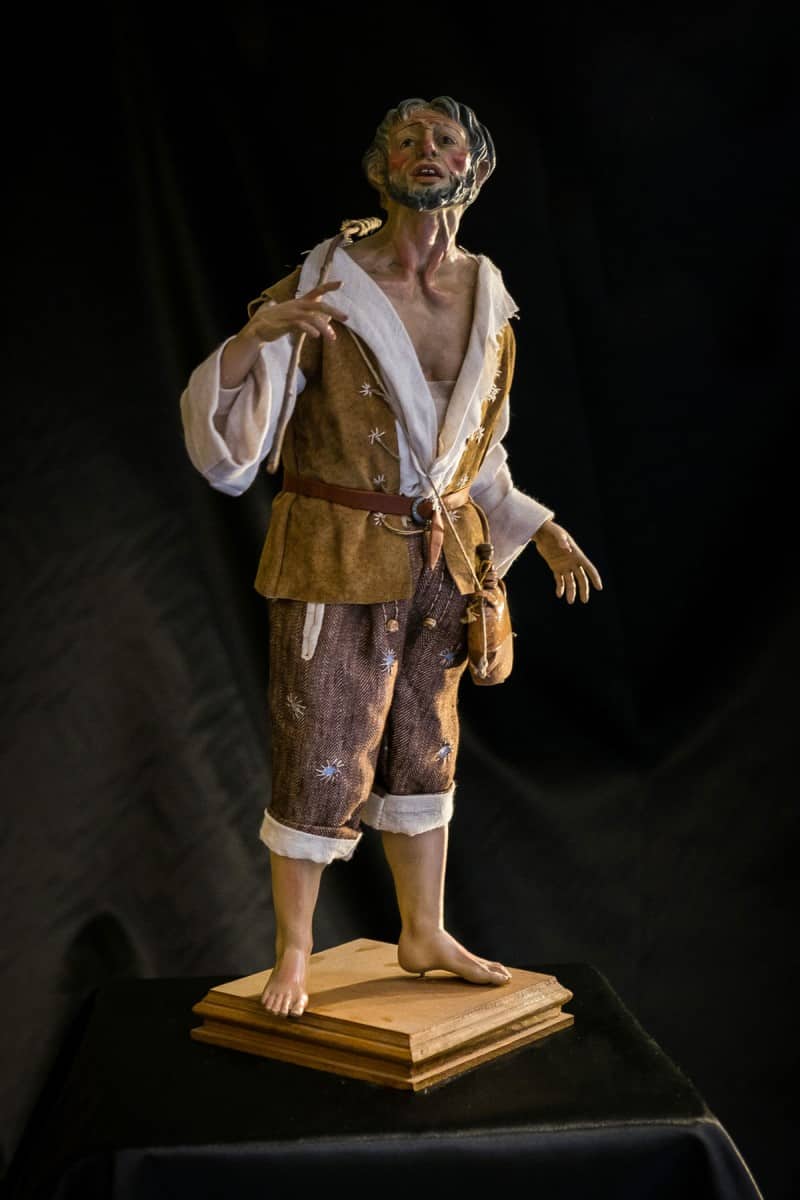
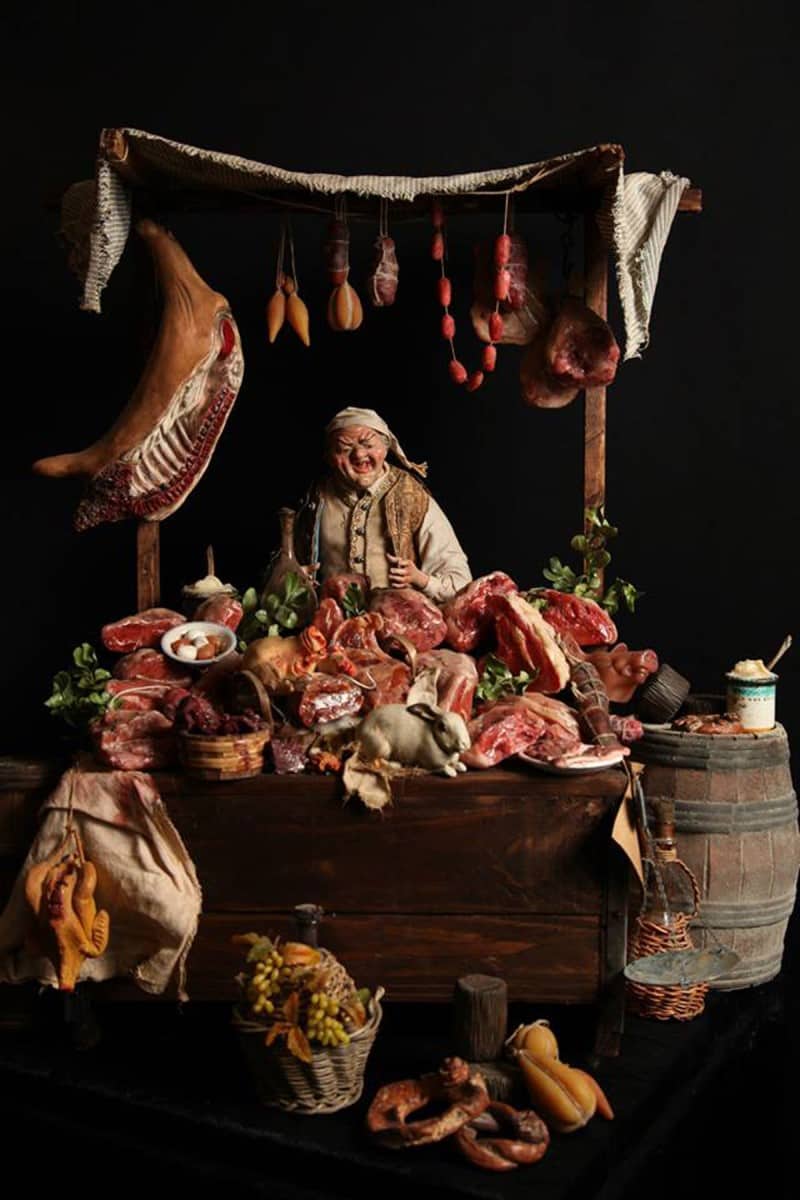
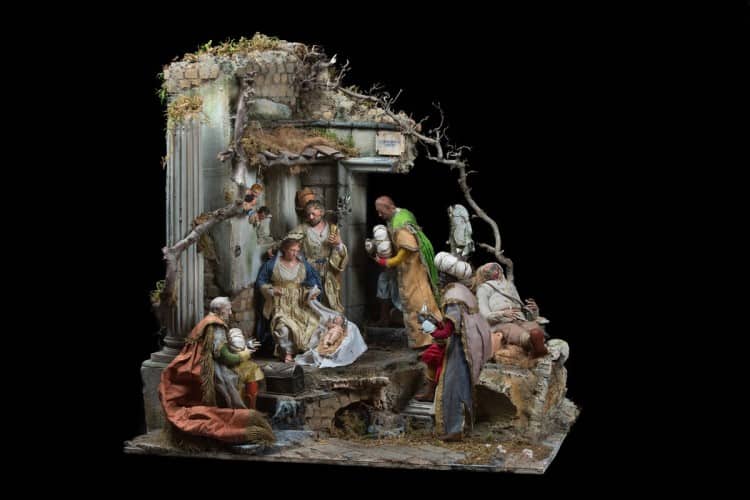
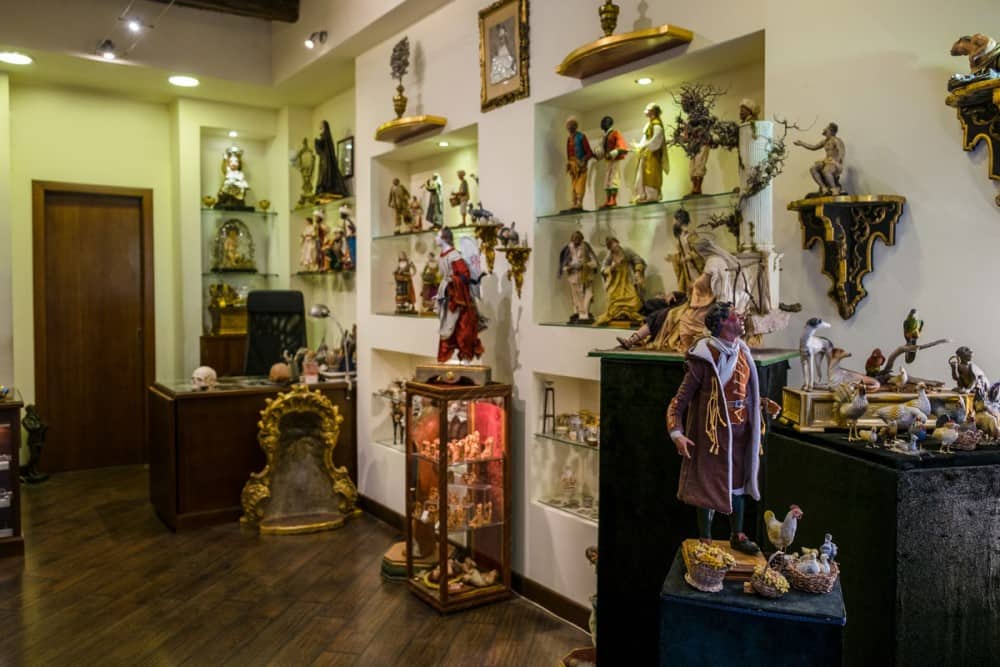
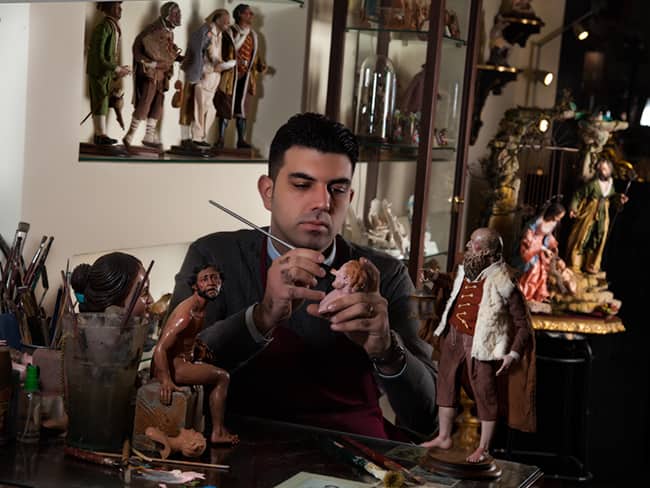
Ludovica Poliero
The Neapolitan nativity scene is the emblem of Christmas. Here are five interesting facts about the Neapolitan nativity scene.